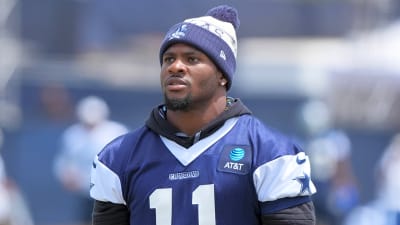
As July winds down, the Toronto Maple Leafs look less like a team chasing headlines and more like one quietly reworking its foundation. This summer hasn’t brought blockbuster trades or high-priced free agents, but that doesn’t mean it hasn’t been meaningful.
It’s the absence of certain moves—alongside a handful of intentional additions—that offers the clearest view of where this franchise is headed. A month into free agency, we can now ask: what did the Maple Leafs do, what didn’t they do, and why does it matter to the team’s DNA?
What the Maple Leafs Didn’t Do
As much as the Maple Leafs made a handful of purposeful additions, they also made a conscious choice not to do certain things. That restraint is telling. Since July 1, this team hasn’t chased star power, overreacted to departures, or made splashy moves to make headlines. What the Maple Leafs didn’t do over the past month might say just as much about where they’re headed as what they did.
1. The Maple Leafs Didn’t Chase the Big Fish
The Maple Leafs avoided the frenzy. There was no late push for a player like Brad Marchand. They resisted the urge to overspend, perhaps for the first time in years. General manager Brad Treliving and his staff seemed more focused on composition than star power.
2. The Maple Leafs Didn’t Overreact to the Marner Exit
There was no one-for-one attempt to replace Mitch Marner’s elite offense. No effort to chase a marquee winger in his place. Instead, Toronto added depth, balance, and reliability, choosing structure over spectacle.
3. The Maple Leafs Didn’t Panic About the Blue Line
Rumours swirled around names like Aaron Ekblad and others. But none of those moves materialized. Instead of reacting impulsively, the Maple Leafs banked on the pieces they already had—and added one quiet upgrade in return for Ryan Reaves.
What the Maple Leafs Did Instead
Although many will look back and say the Maple Leafs’ first month of offseason activity was underwhelming, a different picture emerges with the benefit of hindsight. Looking backward—easier than looking forward, admittedly—it’s clear there have been some philosophical shifts within the organization. Rather than targeting high-end, high-salary players, the Maple Leafs seem to be playing the long game. They’ve brought in mid-range contracts and players who may not be elite stars but could grow into meaningful roles.

Maybe some of them won’t. However, over the past four weeks, a quieter, more intentional approach has taken shape—one that suggests a different team-building philosophy is at work.
1. The Maple Leafs Traded Mitch Marner for a Different Kind of Center
The Marner move defined the team’s summer. By acquiring Nicolas Roy from the Vegas Golden Knights, Toronto said goodbye to flash and gained an edgy middle-six player. Roy is defensively sound, physically strong, and proven in the playoffs. He won’t lead your team in scoring, but he might help it win close games in May.
2. The Maple Leafs Acquired Matias Maccelli From Utah
This 24-year-old Finn is innovative, shifty, and highly creative. He plays the game with pace and poise, and he’s cost-controlled. Matias Maccelli isn’t a Marner clone, but he brings playmaking vision and fits well in a middle-six role. He’s a project, yes, but this is a bet on potential.
3. The Maple Leafs Added Dakota Joshua’s Physical Edge
Former Vancouver Canuck Dakota Joshua brings the kind of north-south game that head coach Craig Berube values. He’s physical, tenacious, and capable of holding his own on the penalty kill. Not a star, but a glue guy. And glue guys could matter when the calendar turns toward spring.
4. The Maple Leafs Moved Reaves, Added Thrun
Toronto traded Ryan Reaves to the San Jose Sharks, offloading his contract and bringing back Henry Thrun—a mobile, puck-moving defender who adds depth and fits the Berube system better. It was a tidy piece of business. Perhaps he never plays, who knows? But it was a move that, similar to a player like Simon Benoit before him, could turn out to be a long-term addition.
5. The Maple Leafs Brought Back Tavares and Locked in Knies
John Tavares returned on a team-friendly deal. It was a nod to his leadership and a signal of cap-conscious maturity. Meanwhile, Matthew Knies signed a six-year extension, becoming a long-term piece of the team’s new identity puzzle.
Why it Matters: Toronto’s DNA Overhaul in Real Time
Despite the noise in Toronto over the past decade, July was notably quiet this year. But underneath that quiet sits something real: change. The Maple Leafs are shifting away from high-octane, top-heavy lineups and building something sturdier. They’re building something more frustrating to play against.
They didn’t go big because they didn’t have to. They went targeted. Deliberate. And they seem, for the first time in years, committed to a team identity that isn’t just built for highlight reels, but for playoff rounds.
What Comes Next for the Maple Leafs?
Goaltending remains a question. The defense still isn’t perfect. But the tone has changed.
This July wasn’t about fantasy. It was about function. What’s taking shape is a roster with layers, purpose, and bite—one that might finally match the postseason demands this market lives and dies by.
It won’t come easily. But maybe that’s the point. After years of chasing a particular kind of success, the Maple Leafs are now building a different type of team. Change is coming. The only question is how far the Maple Leafs are willing to go.
More must-reads:
- Is a Connor Bedard breakout coming in 2025-26?
- Pirates once again show they're not serious about winning
- The '2024-25 NFL TD catch leaders' quiz
Breaking News
Trending News
Customize Your Newsletter
 +
+
Get the latest news and rumors, customized to your favorite sports and teams. Emailed daily. Always free!








